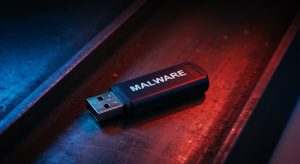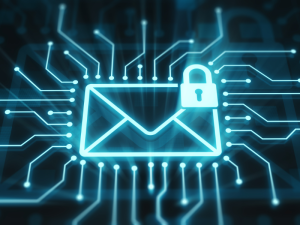Introduction: What are Endpoint Detection and Response Tools?
As businesses become increasingly connected and reliant on remote workforces, the risk surface has expanded significantly. One of the most critical components in a modern security strategy is Endpoint Detection and Response (EDR).
EDR tools are designed to detect, investigate, and respond to suspicious activities across endpoints such as laptops, desktops, and mobile devices. But with so many options on the market, it can be difficult to evaluate EDR solutions from a business perspective. This guide breaks down what business leaders should consider when evaluating EDR tools to make the correct choice for their unique needs.
Define Your Business Objectives
Before diving into the features and functions of different EDR tools, you first need to define your decision criteria and what matters most to your business. Any tool evaluation is unlikely to succeed without establishing goals and determining your priorities first.
Some factors to consider include:
- Business Risk Profile: What types of threats is your business most likely to face? Choose an EDR tool that supports your security goals and can help you combat those threats.
- Regulatory Compliance: If your business must comply with HIPAA, SOC2, ISO 27001, or regulations, the tool you choose must support any industry-specific data protection or security standards.
- User Impact and Business Continuity: How will the tool affect your team and their workflows? Tools should enhance security without disrupting business operations.
Core Capabilities to Look For in an EDR Tool
Once you’ve outlined your goals, it’s time to start evaluating tool features and functionality. Don’t get overwhelmed by buzzwords, instead consider the following and how they align with your business objectives.
Detection & Visibility
The tool should provide real-time visibility into endpoint activity across your entire organization. This includes spotting unusual behaviors, not just known threats.
Response & Containment
When threats are detected, how quickly does the tool respond? Look for features like automated containment, remote device isolation, and scriptable responses.
Threat Intelligence Integration
Does the platform ingest and act on current threat intelligence? Cybersecurity is constantly evolving, and integration with broader security ecosystems enhances both detection and context for threats.
Forensics & Data Retention
Good EDR solutions log endpoint activity over time, enabling your team to conduct detailed investigations and learn from past incidents. Logging and retention are also critical for regulatory compliance.
Operational Considerations
It’s not just features and functions you need to investigate. Endpoint detection and response tools need to be widely deployed to be successful. Without the right staff in place to manage the rollout and implementation, choosing the wrong tool can cause stress and disruption to normal processes. Evaluate the following:
Ease of Use and Deployment
Is the tool difficult to implement? Can the tool be deployed across different operating systems and device types? A simple onboarding process and intuitive interface can save significant time and costs.
Integration with Existing Tools
EDR shouldn’t operate in a vacuum. Look for compatibility with your current tools, like SIEMs (Security Information and Event Management), firewalls, and identity platforms.
Scalability
Your business may grow or change quickly. Ensure the EDR solution can scale up (or down) efficiently to save money without sacrificing performance.
Reporting & Executive Dashboards
Your security posture should be visible at the leadership level. Look for tools that provide non-technical dashboards and clear reporting for board updates or compliance reviews.
Evaluation Framework
With a basic understanding of needs and capabilities, develop an evaluation framework that includes:
Total Cost of Ownership (TCO)
It’s not just licensing fees. Consider setup, training, support, ongoing management, and potential productivity impacts. Some tools may appear affordable upfront but come with hidden costs.
Vendor Support & Maturity
Is the vendor experienced and well-supported? Do they offer reliable customer service? What’s their track record with updates and incident response?
Independent Reviews & Certifications
Consult third-party testing results, analyst reports, and industry benchmarks. Look for relevant certifications and compliance with recognized standards. Talk to peers and colleagues that have previously used these tools and ask them about their experience.
Pilot Programs or Proof of Concept
Whenever possible, test the EDR solution in a limited deployment. Real-world usage reveals more than any sales presentation can.
Collaborating with Stakeholders
Choosing the right EDR tool is a team effort. Involve these internal partners to ensure the best results.
- IT and Security Teams: They’ll assess technical feasibility and manage day-to-day operations. Getting their buy-in is crucial to ensure the long-term success of the tool.
- Compliance and Legal: You need the sign off from the legal team to ensure the tool supports necessary audit and regulatory requirements.
- Finance and Procurement: Their input will be critical for budgeting, contracts, and evaluating ROI.
- Executive and Board Members: They need to understand how the investment translates into risk reduction and business resilience.
Conclusion
Choosing an EDR solution is more than a technology purchase, it’s a strategic investment in your organization’s resilience. By staying focused on business needs, aligning with internal stakeholders, and evaluating vendors through a well-defined framework, you choose the right tool to support your objectives.
Don’t let the complexity of cybersecurity distract from what matters most: protecting your business, empowering your teams, and ensuring long-term continuity.
If you need help selecting the right EDR tool for your company’s unique needs, the Breach Point team is here to help. Contact us today and we’ll share our expertise to help you find the right fit.







